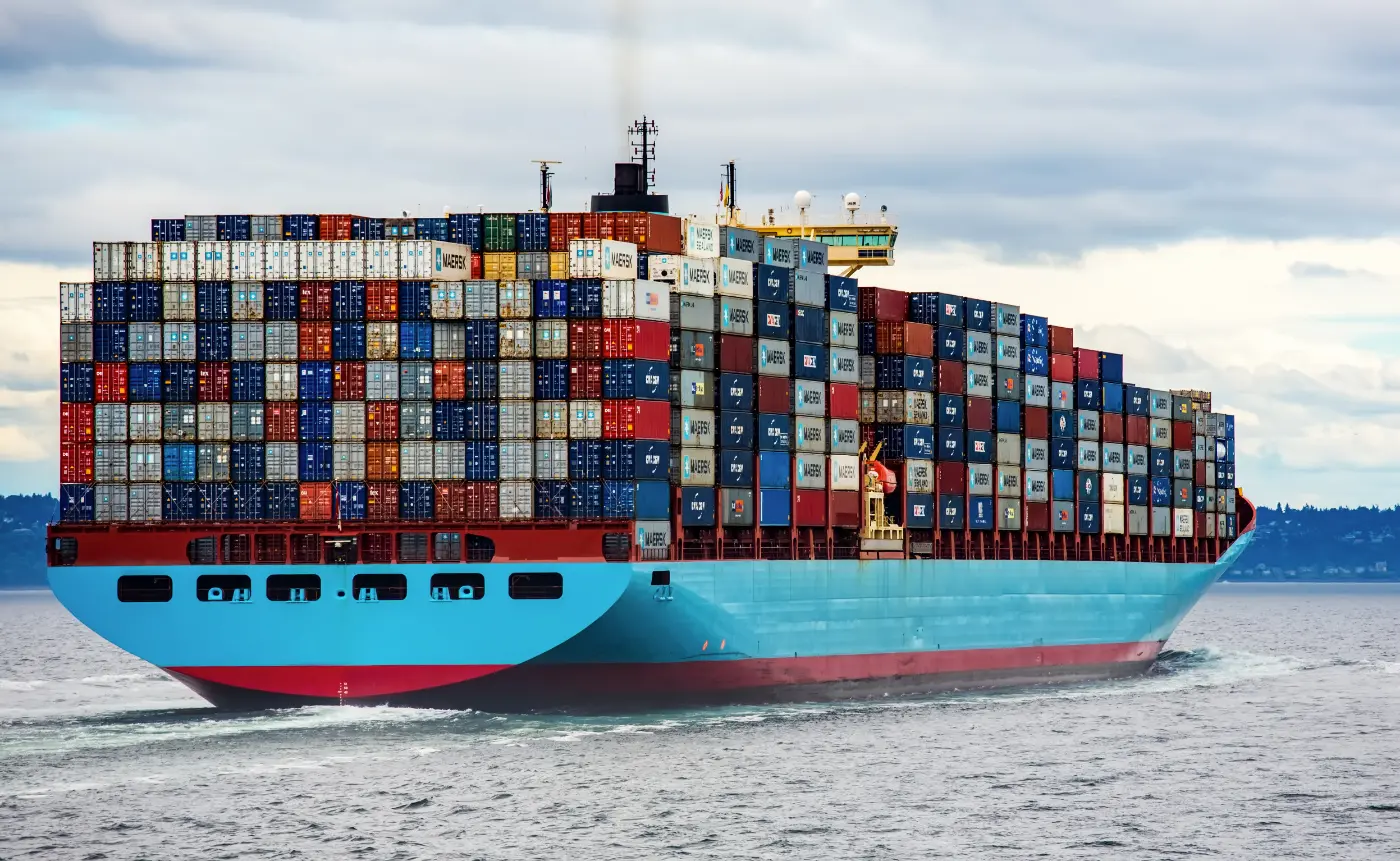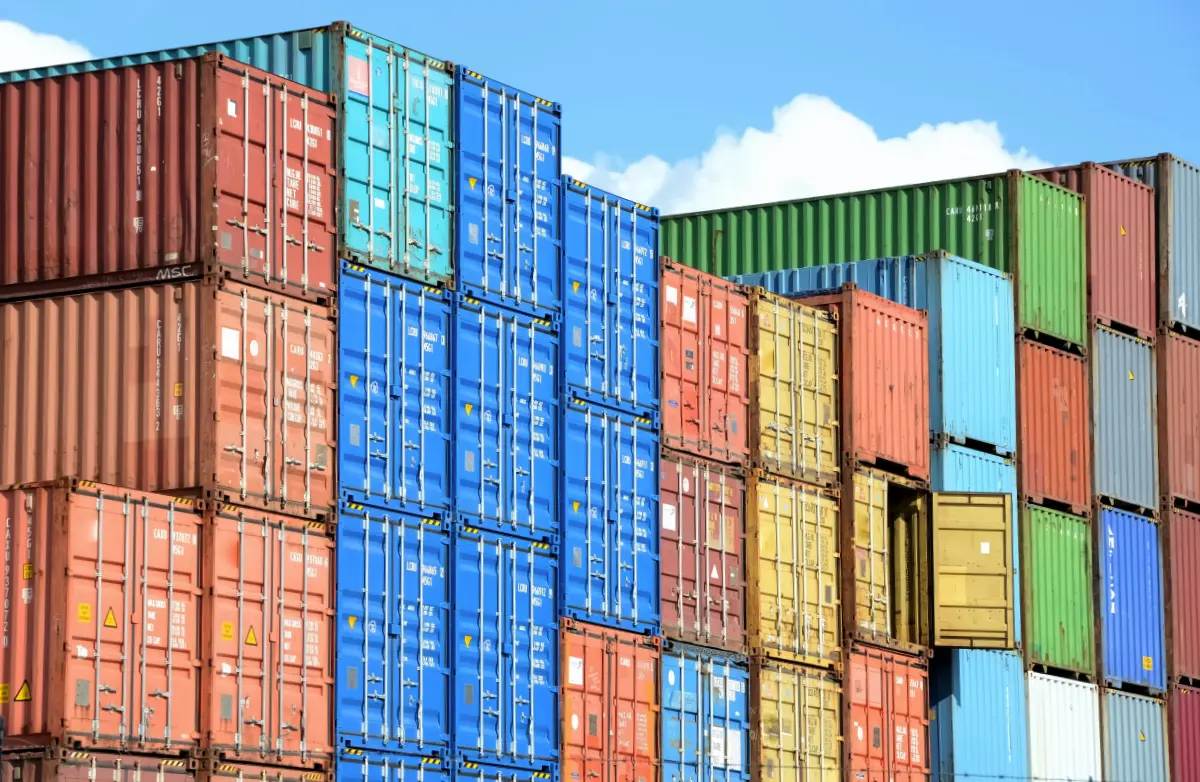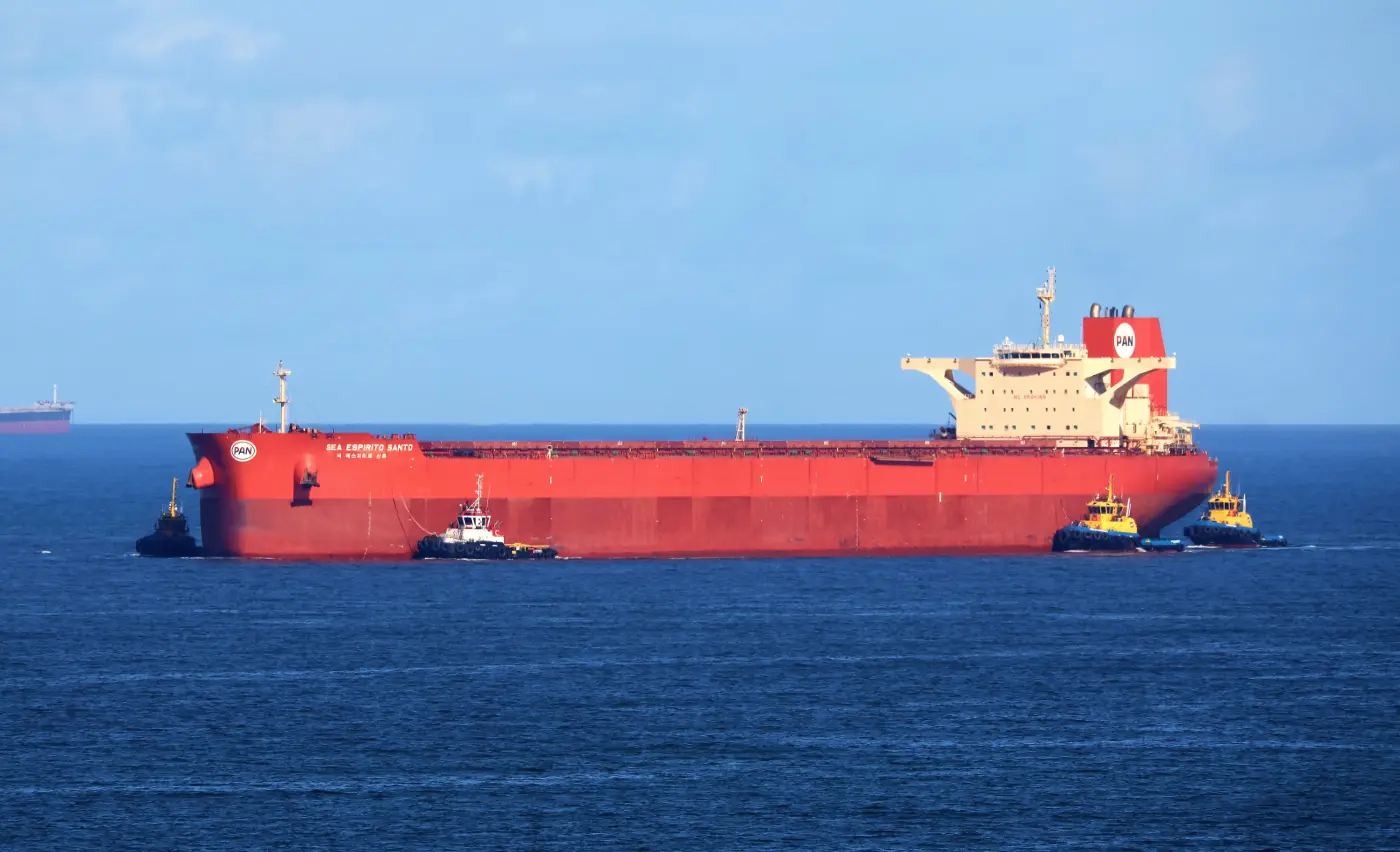The History of Container Ships
Did you know that the shipping container is one of the most important inventions of the 20th century? Click here to find out why.

Container ships changed the face of cargo shipping. Although still relatively in its infancy, over sixty years of implementation have seen major improvements in the transport of goods around the world and the efficient connection of countries across the oceans.
In this in depth article about the history of container ships, you will learn about the first container ships, the inventor of container ships, the different size classes in use, how container ships how changed the shipping industry, and how container ships have changed over the years.
Additionally, we will cover the most important advancements in container ship history, the worst accidents, regulations that were created to manage the industry, and how container ships affected warfare.
When Was the First Container Ship Launched?
The very first container ship to be launched set sail in 1931 carrying 21 containers. This ship was the property of Southern Railway UK and was christened the Autocarrier. Although an accidental first foray in container ships, the first purposeful container ship – and the one that is most famous for launching the industry – would not come along for another 25 years.
In 1956, the first commercial container ship Ideal X sailed out of Newark, New Jersey to transport 58 containers converted from old trucks to Houston, Texas. Container ships were originally built from old T2 oil tankers from World War II that were no longer in use since the war had ended.
However, Ideal X was the first of its kind as a customized steamship that was fashioned to hold large shipping containers which eventually became the standard for transoceanic transport of goods.
With the advent of the shipping container, vessels no longer needed to have multiple specialized cargo holds since goods were packed in the containers before loading on to the ships, making the transition from vessel to shore much easier.
Who Invented Container Ships?
While the idea of transporting goods in containers goes back thousands of years to ancient cultures like the Greeks, the first person to capitalize on the large scale notion of container shipping was Malcolm McLean.
McLean owned his own trucking company, McLean Trucking, so he understood the need for efficiency when it came to loading and unloading cargo between the different modes of transportation. He envisioned a way to easily maneuver cargo from trucks to ships to trains without labor intensive work or unnecessary time consumption.
Together with Keith Tantlinger, an engineer, McLean devised the first purposeful container ship, the Ideal X. McLean’s invention revolutionized the trade of goods not only on a local scale but also on a global one. His idea saved almost three weeks’ worth of time spent loading and unloading ships and cut down significantly on wasted space.
McLean’s involvement in the realm of container ships did not stop there. In the late 1970s he bought United State Lines which operated one of largest fleets of container ships participating in global commerce with each ship able to hold almost 4,500 container units. McLean is considered the father of containerization and responsible for making transoceanic trade what it is today.
What Are the Different Size Classes of Container Ships?
Container ships have come a long way from the initial vessels that only held less than one hundred containers. Now they come in a variety of lengths with capacities that are staggeringly more efficient than their original predecessors.
The current unit of measurement for a container ship’s capacity is in TEUs – or twenty foot equivalent units – referring to the standard size containers that the vessels carry. The smallest container ships are known as feeder ships and only carry a maximum of 3,000 TEU. Most of these ships operate regionally and come equipped with their own crane onboard to help maneuver cargo on and off the vessel.
The next size up is the Panamax class with a length just shy of 1,000 feet and a maximum capacity of 5,000 TEU. These ships were able to traverse through the locks of the Panama Canal before the updates to the Canal were finalized in 2016.
Post-Panamax and NeoPanamax classes are ships measuring 1,200 feet in length with the ability to carry up to 15,000 TEU. Before the new locks were put into place in the Panama Canal, these ships were too big to go through. Now, however, they are considered the maximum allowable size to cross the Canal.
The largest class is known as the Ultra Large class with lengths and capacities that exceed the Post-Panamax and NeoPanamax class vessels. Even though these container ships are far too large for the Panama Canal, they can still cross the Suez Canal.
How Did Container Ships Change the Shipping Industry?
With the introduction of the container ship, global trade companies could transport more goods across the ocean at a time, effectively saving cost in fuel, time, and materials. Marine shipping wasn’t the only industry affected by container ships either. Transport of goods by truck and railway became more efficient and cost effective.
The cost of labor decreased significantly allowing companies to ship out more products at a lower price. Additionally, profit loss saw a dramatic drop since theft was less common from the sealed containers than it used to be used through loose hold shipping.
By designing a way to save time, space, and money, McLean pushed the shipping industry forward so that the global economy became more attainable and goods from halfway across the world could be made available for insanely low cost for consumers and manufacturers.
How Have Container Ships Changed Over the Years?
The earliest container ships were converted oil tankers and simply utilized the open space on deck to stack and accommodate the containers being transported. These ships usually didn’t exceed four containers high when loading in order to keep the ships properly balanced.
In the 1970s, the first cellular container ship came on to the scene virtually doubling the amount of space available for container storage by allowing containers to be stored in an open area below deck. While the ship remained well balanced, the majority of its ballast was the cargo that it carried.
As the years progressed, container ships became larger and larger until the invention of massive vessels in the early 2010s that have the ability to stack containers twenty-five units high with at least a dozen rows sitting below deck.
With the evolution of larger container ships, other important aspects also came into play to make the industry as efficient as possible. Containers were standardized in order to allow for maximum space usage and packing methods became more uniform. Practices for securing containers onboard were also enhanced to prevent the loss of cargo at sea.
What Are the Most Important Advancements in the Container Ship’s History?
Some of the most advancements in the history of the container ship actually have to do with the advancements in shipping technology in general. As steam powered ships gave way to diesel powered vessels, shipping became a more reliable and faster method of transport for goods.
The container vessel came at a time when it solved the problem of how to make the shipping industry more efficient. Electric and oil powered cranes became crucial for the rise in popularity of container vessels so that large containers could be easily and quickly loaded and unloaded.
One of the more modern advancements in container ship history that makes the vessels still relevant and viable as an industry today is the sourcing of more sustainable materials to use for containers. Waste has been significantly reduced and old containers that are no longer up to industry standard for shipping have been upcycled for everything from storage units to homes.
What Are Some of the Worst Container Ship Accidents?
Most of the worst container ship accidents in recent history have resulted in the loss of thousands of containers as well as the lives of crew members to the sea. Accidents involving container ships are not very common and even by today’s standards with hundreds of millions of containers shipped across the world annually, only around 1,500 containers are lost every year.
However, when accidents happened, they had disastrous consequences. Most container ships accidents were the result of bad weather or mishandled cargo. Some ships have unexplained explosions that destroy most of the cargo and can even sink the vessel if there are undeclared explosive materials onboard like fireworks.
Other times, Mother Nature is too much for the ships to handle and the power of the ocean has been known to crack hulls in two or roll the vessel completely over. The MOL Comfort was one such disaster that split the entire ship in two due to bad seas in 2013. Although over 4,000 containers were lost, luckily no crew members perished.
This is considered, by some, to be the worst container ship disaster in the history of the industry. As a result, sister ships of the MOL Comfort were taken out of commission in order to be strengthened longitudinally to prevent the same disaster from repeating itself. Corrective action reports are necessary to help avoid such situations and ensure the safety of the crew and cargo.
What Are the Regulations That Have Developed Concerning Container Ships?
Once container ships took off as a booming industry, there was a need for regulations to make international trade more efficient. The International Maritime Organization met with the United Nations in 1972 during the Customs Convention on Containers. During this meeting, they provided a framework for containers as instruments of international traffic.
These regulations included prohibitions, taxes, and import duties concerning the shipping of containers. Additionally, they established safety requirements for all workers involved in the industry from those working on the docks loading and unloading cargo to the ship’s crew ensuring safe travel.
The International Standards Organization also implemented standards concerning the containers and the vessels which ship them. These standards include size dimensions, sealing mechanisms, outfitting of the vessels for container storage, requirements for specialized cargo such as liquids, gases, and hazardous materials, and other such regulations.
How Did Container Ships Affect Warfare?
Before the arrival of the container ship, war supplies such as weaponry, vehicles, and food rations were shipped in holds and loose cargo bays. It wasn’t until after World War II that container ships became a booming industry, just in time for the Vietnam War.
Container transport changed the nature of warfare and helped keep soldiers clothed, fed, and armed while they fought in a war halfway across the world. Container ships helped the United States transport vehicles and large weaponry much more efficiently than in previous wars with larger quantities of goods being delivered at a time.
Today container ships continue to be an integral part of war efforts and can be the deciding factor that could turn the tide of war. An on-time shipment of much needed supplies can be the saving grace of an army’s battle. On the other hand, a container ship that is sunk by the enemy or blocked from reaching the fighting side could also greatly hinder battle progress.
Conclusion
Although container ships are still in their infancy, this invention has revolutionized the global trade industry in a huge way. Initially taking off in the 1950s with Malcolm McLean’s converted World War II tanker the Ideal X, container ships have expanded from being able to hold less than a hundred containers to over fifteen thousand.
The setting of regulations that help ensure the safety of container transportation and standardized the ships and containers further progressed the industry. Transoceanic trade became more efficient than ever and now hundreds of millions of containers are shipped across the world every year.
Container ships have changed the face of warfare, transportation of goods, and construction of cargo ships. However, there are still improvements to be made as accidents due to bad weather and incompetent construction still occur. Nevertheless, the container ship is one of the most influential inventions of the 20th century.
Also read:




